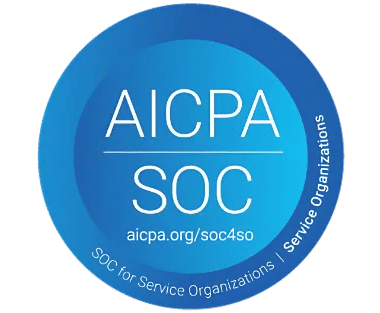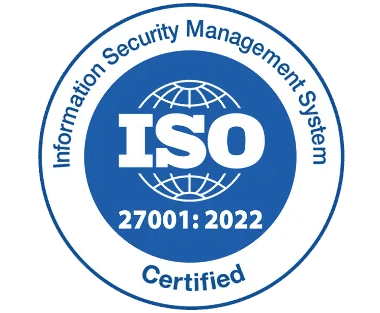Tendering Explained: Meaning, Process & Benefits

In large enterprises and government sectors, business tenders are a fundamental part of the procurement strategy. Whenever there’s a need to procure goods or services on a significant scale, organizations typically issue a tender to invite competitive bids from potential suppliers. This transparent process helps identify the most qualified vendor at the right time, ensuring smooth project execution.
“Floating a tender” refers to the formal act of announcing procurement requirements publicly—often through newspapers, digital platforms, or industry bulletins. From bid submissions to contract finalization, the tendering journey involves several structured stages that demand accuracy, due diligence, and strong oversight.
Effective expense management plays a key role throughout this process—ensuring budgets are aligned, cost estimates are realistic, and financial decisions are well-documented. By keeping a close eye on procurement-related spending, organizations can maintain transparency, avoid overspending, and maximize value from each tender awarded.
In this guide, you’ll gain a clear understanding of how business tenders operate, how to effectively float a tender, and the best practices for evaluating proposals to choose the right partner.
What Is Tendering in Business?
Tendering is a structured way businesses—especially large organizations and government bodies—go about sourcing the goods or services they need. When a company has an open requirement, it “floats” a tender, essentially sending out a public invitation for vendors or contractors to submit their proposals.
These proposals, or bids, come from suppliers who believe they can meet the project’s needs. From there, it’s the job of the procurement team to carefully review all submissions and find the best possible fit—whether it’s for raw materials, finished goods, or specific services.
Typically, the tender outlines what’s required, and suppliers must respond within a set deadline. They submit detailed technical and financial bids that highlight how they plan to deliver and at what cost.
Once all bids are in, the evaluation process kicks in. By the end, the buyer selects a supplier who not only meets the project requirements but also offers the best value—making it a fair and competitive process for everyone involved.
How Does the Tendering Process Work?
When organizations want to source vendors in a transparent and unbiased way, they turn to the tendering process. It’s designed to give every eligible supplier a fair shot—eliminating favoritism, backdoor deals, and other unethical practices that sometimes sneak into project procurement.
The process kicks off when the procurement team issues a Request for Tender (RFT)—a formal document outlining what’s needed. This request is made public, inviting qualified vendors to review the opportunity cost and submit their bids.
One of the core strengths of this approach is its openness. Because tenders are advertised publicly—often through newspapers or industry portals—any vendor who meets the criteria can throw their hat in the ring.
Suppliers then begin crafting their proposals, known as tenders, where they outline how they plan to fulfill the buyer’s requirements. These documents typically include detailed pricing, timelines, project scope, and key deliverables. The goal is to present a compelling offer that balances quality, cost, and capability.
Ultimately, the buyer evaluates all submitted bids and chooses the one that offers the best value and aligns with their project goals—ensuring a win-win for both parties.
What Does a Successful Tender Process Look Like?
A successful tender process doesn’t just end with picking a vendor—it’s about finding the right vendor through a well-structured, transparent journey from start to finish.
Step 1: Pre-Tender Stage
The pre-tender stage is where everything begins—it’s about identifying a genuine need for goods or services and shaping that into a clear plan. Whether it’s launching a new project or sourcing specific materials, this phase transforms an internal requirement into a structured request for tender (RFT) or quotation.
How this stage is handled often varies based on the industry. For example, what works for a construction project may not suit a software implementation.
Typically, the procurement team brings in a subject-matter expert or consultant to assess the requirements in detail—mapping out deliverables, setting timelines, and estimating costs. This phase is critical because missteps here can lead to confusion later or, worse, selecting a supplier that doesn’t actually fit the bill.
Before finalizing the tender request, teams must carefully consider every angle—from project scope and compliance to budget constraints—to ensure everything is aligned before moving forward.
Step 2: Pre-Qualification Stage
The pre-qualification stage acts as a filter to narrow down potential vendors before the actual tendering begins. While it’s not a mandatory step, it’s incredibly useful—especially for complex or high-value projects.
At this stage, organizations review the pool of interested vendors and weed out those who don’t meet the basic eligibility or capability criteria. Though you could skip this step and open the tender to all, pre-qualification helps save time and effort for both you and the vendors by ensuring only serious, suitable candidates move forward.
This process also opens the door to early contractor involvement (ECI), where shortlisted vendors can provide insights, suggest improvements, and even propose more sustainable or cost-effective approaches to delivering the project. It’s a win-win that helps refine the scope while encouraging innovation and responsible resource planning.
Step 3: Tender Contract Documentation
This stage involves creating a comprehensive set of documents that clearly outline how the tender process will unfold, along with all the terms, technical requirements, and project specifications. These documents serve as a blueprint for potential bidders, helping them understand what’s expected and how to structure their proposals.
The more detailed and transparent these documents are, the easier it becomes for suppliers to craft accurate, competitive bids that align with your needs.
Once finalized, the tender is formally announced—typically through local newspapers or industry platforms—to invite qualified vendors to participate. The announcement usually includes essential details such as the project title, scope of work, eligibility criteria, contractor type, submission deadlines, fee details, and project location.
Step 4: Receiving and Evaluating Tenders
Once the tender is officially published, vendors begin submitting their proposals. It’s crucial to adhere strictly to the submission deadline—any bids received after the cutoff point should be automatically disqualified to maintain fairness and transparency.
Clear evaluation criteria and guidelines—defined in advance by the procurement team—should be shared with all bidders. These criteria often cover areas like sustainability considerations, potential risks, compliance with project needs, and the vendor’s capacity to deliver.
During the evaluation phase, the procurement team carefully reviews each submission to ensure it aligns with the tender requirements. Bids that fall short or fail to meet essential qualifications are filtered out early in the process.
It’s tempting to gravitate toward the lowest bidder, but cost alone shouldn’t drive the decision. A vendor might offer a lower price upfront but could introduce hidden costs later due to inefficiencies or project delays. Instead, focus on value—selecting a partner who brings expertise, reliability, and long-term benefits to the table.
Step 5: Awarding the Tender
Once all qualified bids have been thoroughly evaluated, it’s time to select the vendor who best meets the project’s requirements—factoring in both compliance and risk mitigation. The winning bidder should offer not just a competitive price, but a transparent cost structure that avoids hidden charges and future financial surprises.
This bidder becomes your “best value” choice—offering a balanced mix of quality, reliability, and cost-effectiveness that aligns with your project goals.
After finalizing your decision, formally notify the selected vendor and confirm their acceptance of the contract. Once agreed upon, the contract can be officially awarded. It’s equally important to inform all other participants of the outcome through a clear and professional notification, closing the loop with transparency and fairness.
Key Considerations Before You Float a Tender
Getting ready to issue a tender? Before you go live with your request, make sure you’ve covered all the essentials. Here’s what you need to double-check to ensure your tender process starts off strong and smooth.
1. Reassess the Purpose
Before putting a tender out into the world, take a step back and double-check if the procurement is truly necessary. Could it be delayed, scaled down, or managed internally? Carefully review the scope, urgency, and budget at hand. Floating a tender should be a well-thought-out decision—not just a routine step.
2. Define a Clear Tender Response Format
Make sure your tender document lays out a crystal-clear structure for responses. The last thing you want is confusion over how bids should be framed. When bidders know exactly what’s expected—from formatting to required sections—it streamlines evaluation and saves everyone valuable time.
3. Be Transparent About How You’ll Choose
Suppliers appreciate knowing what’s behind the curtain. Share a clear outline of how you’ll evaluate bids—whether it’s based on experience, pricing, turnaround time, or creativity. When vendors understand the criteria and steps involved, they’re more likely to tailor their proposals to what truly matters, saving time on both sides.
4. Price It Smartly
Before placing a bid, freelancers will size up your budget range to decide whether it’s worth their time. The price you set acts as a signal—go too low, and you may only attract beginners; aim too high, and you might scare off qualified pros who think the project is more complex than it is. Strike a balance that reflects the value of the work, and you’ll draw the right kind of talent ready to deliver
5. Uphold Bid Confidentiality
To encourage honest and competitive proposals, make bid confidentiality a cornerstone of your procurement process. When bidders know their quotes won’t be exposed to others until the tender closes, they’re more likely to submit fair and accurate pricing—without trying to undercut or second-guess the competition.
In the past, sealed bids were stored in locked boxes to prevent tampering or premature disclosure. Today’s digital platforms should mirror that level of security. Be upfront with your confidentiality policy—transparency here builds trust and reinforces your reputation as a reliable and ethical buyer.
6. Allow a Thoughtful Opening Period
Give suppliers the time they need to craft quality proposals. Preparing a tender response isn’t a quick task—it involves analyzing your requirements, calculating costs, assembling documents, and getting internal approvals. That’s why your minimum opening period should strike the right balance.
Set a timeline that’s fair and realistic—long enough for vendors to deliver their best work, but not so far out that it loses urgency. A well-timed window shows professionalism and increases the chances of receiving strong, competitive bids.
What to Include in Your Tender Document
A successful tender starts with a well-structured and detailed tender document. Think of it as your first impression—it needs to be clear, complete, and compelling to attract the right vendors from the start.
Outline your project scope, deliverables, timelines, evaluation criteria, and budget expectations. The more precise you are, the fewer back-and-forth clarifications you’ll need later. A thorough document filters out unqualified bids and ensures only serious, well-matched suppliers come forward—saving you time and effort in the long run
Include Clear Company Information
Your tender document should begin with a clear introduction to your company. Include essential details like your organization’s name, official address, contact number, email, and country of operation. This helps bidders understand who they’re engaging with and lends credibility to the tender process.
If you’re keeping the tender value open, be transparent—share the estimated budget range or a benchmark figure so vendors can quote appropriately. Don’t forget to specify the tender release date and the final deadline for submissions. These key timestamps help bidders manage their timelines and ensure timely participation.
Craft a Formal Invitation Letter
This is your official handshake—use it to formally notify potential suppliers about the tender opportunity and invite them to submit their bids. Your invitation letter should briefly outline the nature of the project, key deadlines, and where they can access the full tender document.
Keep the tone professional yet approachable, and make sure it clearly conveys your intent to work with qualified vendors. A well-written invitation not only sets the tone for the bidding process but also encourages serious and timely responses.
Define Eligibility Criteria for Bidding
Set the stage by outlining who qualifies to participate in your tender. Clearly list the mandatory requirements bidders must meet—this could include minimum annual turnover, relevant project experience, industry certifications, or technical capabilities.
Including these expectations upfront helps streamline your evaluation process and filters out unqualified vendors early on. Ask for supporting documents to verify claims, such as financial statements, past project portfolios, or client references. You can also request insights into their operational workflows—like the manufacturing or quality control processes they follow—to ensure alignment with your standards.
Set Clear Standards and Compliance Expectations
If your project requires goods or services to meet specific quality or industry standards, make it clear right from the start. Whether it’s ISO certifications, IEC compliance, ISI marks, or other recognized benchmarks, outlining these expectations helps ensure you receive bids from vendors who meet your quality threshold.
Clearly listing the required standards or accreditations not only demonstrates your commitment to quality but also encourages suppliers with proven credentials to step forward—saving you time and reducing compliance risks down the line.
Outline Additional Terms and Responsibilities
This is where you clarify the fine print—any important conditions or obligations bidders need to know before submitting their proposal. Be transparent about contractual terms, delivery expectations, payment schedules, or any legal requirements involved.
Clearly define what the winning bidder will be responsible for once the contract is awarded. This could include ongoing support, reporting duties, or adherence to specific timelines. If the contract is short-term or has a fixed duration, mention the expected supply period or service window.
A well-detailed section here prevents misunderstandings and helps bidders assess their ability to meet your needs—leading to more confident, committed offers.
If you’re issuing a closed tender, chances are you’ve already vetted potential bidders through a prequalification process. In such cases, you’re extending the Request for Tender (RFT) only to a selected group whose capabilities and scope of work align with your project needs.
In contrast, open tenders invite a broader pool of vendors to participate. Here, the bidding process starts when interested suppliers accept the RFT and submit their proposals without any prior shortlisting.
Clarifying the type of tender upfront sets the right expectations and ensures a smoother bidding experience for all parties involved.
Tender Procurement Process: What Bidders Should Expect
Give your bidders a clear roadmap of what lies ahead. This section should walk them through how the tender process will unfold—from submission to final selection.
Outline each step, including how bids will be received, evaluated, and compared. Let them know the criteria their proposals will be measured against—whether it’s cost-effectiveness, technical capability, timelines, or overall value. Transparency at this stage not only builds trust but also helps suppliers tailor their bids more effectively to match your expectations.
Clarity in the process sets the tone for a fair, competitive, and efficient procurement experience.
Tender Evaluation Process: A Two-Stage Approach
Evaluating tenders is a crucial phase that demands precision, fairness, and consistency. Once all bids have been submitted, the real work begins—carefully reviewing each proposal to identify the most suitable partner.
The evaluation typically unfolds in two distinct stages:
- Initial Screening – At this stage, all submissions are checked for compliance with the mandatory requirements. Proposals that fail to meet basic eligibility criteria or lack the necessary documentation are filtered out.
- Detailed Assessment – Proposals that pass the first round are then thoroughly assessed based on predefined criteria such as pricing, technical strength, delivery timelines, past performance, and value for money.
1. Prequalification Stage
This initial phase acts as a gatekeeper, ensuring only eligible and credible bidders move forward in the tendering process. During the prequalification stage, bidder representatives are invited, and their submissions are carefully reviewed against predefined criteria.
A dedicated prequalification committee evaluates the documents using a structured checklist to verify compliance. This step focuses on validating a bidder’s legal, financial, and operational readiness to take on the contract.
Key areas of assessment typically include:
- Valid licenses and permits authorizing the bidder to operate within the tender’s specified region.
- Audited financial statements and revenue records for the past three fiscal years.
- Complete company verification documents such as business registration, PAN, income tax, and other relevant tax certifications.
Only those who meet all the mandatory requirements will be shortlisted for the next stage of evaluation.
Confirmation of Infrastructure and Resource Readiness
Bidders must demonstrate that they have access to the necessary infrastructure, equipment, and raw materials to successfully fulfill the contract requirements. This assurance is critical to gauge their capacity for timely and quality delivery.
2. Technical Evaluation Stage
At this point, the competition heats up. The technical evaluation stage is where each qualifying bidder is scored—typically on a scale of 0 to 10—based on how well they meet the technical expectations of the tender.
A detailed scoring system is used, and while the exact criteria may vary across industries, the focus remains on identifying vendors who demonstrate real capability and domain expertise. The evaluation committee assigns scores for each area, contributing to a cumulative technical score that determines who progresses.
Key assessment areas include:
- Regulatory and Process Compliance – Verification of technical certifications and licenses, including whether they are current and applicable to the scope of work.
- Industry Experience – Number of years in operation and a track record of successfully completed projects similar in scale and complexity.
- Technical Competence – Depth of understanding of the contract’s technical requirements and the bidder’s ability to align with them.
- Operational Readiness – Availability of raw materials, skilled workforce, and reliable sourcing or production capabilities.
3. Financial Evaluation Stage
This stage is all about determining whether the quoted prices from technically qualified bidders are fair, competitive, and aligned with the value of the goods or services being procured.
The evaluation committee will compare each bidder’s proposed pricing against market benchmarks, historical pricing data, and quotes from other shortlisted suppliers. The goal is to ensure that the selected offer provides the best value—not just the lowest price.
During this stage, evaluators are permitted to reach out to bidders for written clarification regarding the pricing details submitted. However, it’s important to note that this communication is strictly for clarification purposes, not negotiation. Every exchange must be documented to maintain transparency and auditability.
To score the financial proposals, the bid with the lowest valid price will receive the highest possible score allocated for this stage. All other bids will be scored in relation to it using the following formula:
P = y * (μ / z)
Where:
P = Financial score of the bidder
y = Maximum points allotted for financial evaluation
μ = Lowest bid price among all qualified bidders
z = Price quoted by the bidder being evaluated
Once all financial scores are calculated, they are added to the technical evaluation scores to derive each bidder’s final composite score.
The bidder with the highest combined total is selected as the most advantageous offer, ensuring the contract is awarded to the supplier who delivers the best value for money.
4. Final Evaluation Wrap-Up and Contract Award
Once the technical and financial scores are tallied, the bidder with the highest combined score is officially identified as the preferred supplier. They will be invited for a final round of discussions to iron out implementation specifics and clarify any remaining points.
At this stage, representatives from the winning bidder’s team may join to address queries related to timelines, deliverables, operational concerns, or even the integration of tools like expense management software to streamline financial tracking. This is also the point where final negotiations—if any—can take place to align expectations and ensure all systems, including financial processes, are well-coordinated.
Following these discussions, the selected bidder will receive an official Letter of Award (LoA), confirming the contract and giving them the green light to begin work.
All participating vendors will be formally informed of the outcome, either via email or through a public notice on the procuring organization’s website. Unsuccessful bidders are encouraged to request feedback to understand where they fell short and how they can strengthen future submissions.
In summary, tendering doesn’t have to be complex. With a clear understanding of its flow and a focus on transparency and structure, both buyers and suppliers can navigate the process with confidence and clarity.
Conclusion
Tendering is a crucial process that ensures transparency, competitiveness, and value in procurement. By understanding each stage—from bid invitations to final negotiations—organizations can make more informed decisions and foster stronger partnerships. As operations move forward post-tender, it’s equally important to have the right tools in place for execution and accountability. Leveraging solutions like expense tracker software can help businesses monitor project-related costs in real time, stay within budget, and maintain financial clarity throughout the lifecycle of the contract.
Frequently Asked Questions
What is the meaning of the tendering process?
The tendering process is a structured and formal way of inviting bids for large projects, services, or purchases—often used by governments, corporations, and public sector organizations. It helps identify the best supplier or service provider based on factors like cost, capability, experience, and quality. In simple terms, it’s how businesses and institutions pick the right partner to get a job done—fairly and transparently.
What is the meaning of tendering?
Tendering refers to the act of inviting and submitting bids for a contract. It’s a key step in procurement where potential suppliers are asked to “tender” or submit their offers (including price, timeline, and plan of action) to win a project or supply deal. It ensures that the selection is competitive, transparent, and based on merit.
What does the term tendering refer to?
The term tendering refers to the overall process of calling for bids, reviewing proposals, and selecting the best fit for a specific job or service. It covers everything from preparing tender documents to finalizing a contract with the chosen bidder. It’s not just about picking the lowest price—it’s about choosing the right solution with the right value.
Why is it called tendering?
The word “tender” comes from the old French word tendre, meaning “to offer” or “to present.” In business, it reflects the idea of offering a proposal or bid. When someone “tenders” for a contract, they’re formally offering their services or goods under specific terms—hoping to be selected over others. That’s why we call the whole process tendering—it’s about offering the best possible proposal for a job.










_svxLrd-8yH.png)

_2VYSFUTN5m.png)

_JiluXJRGNl.svg)

_2djTKNocf.png)





_Rapo0hRMBy.png)










